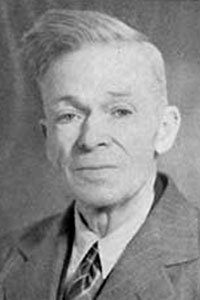
Eminent Farmer
County: Campbell
Edward C. Slocum was born June 13, 1873, in Shiawassee County, Michigan and went with his parents in 1883 to Aberdeen, the end of the railroad. His father worked breaking sod for the settlers. In 1884, the family moved farther west, homesteading where Herreid now stands.
The family moved to Mound City in 1890 where his father published the Weekly Prairie Picayune. Slocum learned to set type by hand. He attended high school in Aberdeen two years and State College for a year. He then returned to Campbell County to teach school. From 1897 to 1901, he was county superintendent of schools.
In December 1896, he married Julianna Sannes, herself a daughter of Campbell County pioneers. To them were born six boys and two girls.
In 1901, Slocum homesteaded near the river west of Pollock. He then spent two years publishing the Picayune and one year farming in Minnesota. In 1907 he bought the 480-acre farm in Fairview township.
In 1917, with the help of the two oldest boys, he built a large house, from blue prints he drew himself. He owned one of the first gasoline tractors in the community. He practiced crop rotation and used clover and alfalfa to build the soil. He specialized in Shorthorn cattle and Poland China hogs.
In 1943, due to failing health and advanced age, he retired from strenuous work, but accepted an appointment as County register of deeds.
He has served five terms in the state legislature, two as representative, and three in the senate. He was the author and sponsor of the Slocum primary law still in effect and recognized as a leading piece of political reform legislation.
Slocum was chairman of the Wayside AAA committee, member of the county AAA committee, director and secretary of the Glenham farmers’ elevator, director and charter member of the Aberdeen production credit association and school board treasurer. He was a member of the County Extension board and a charter member of the county crop improvement association.
In 1935, he was chosen as one of a state committee of farmers called to Washington to discuss a long-time farm program.

